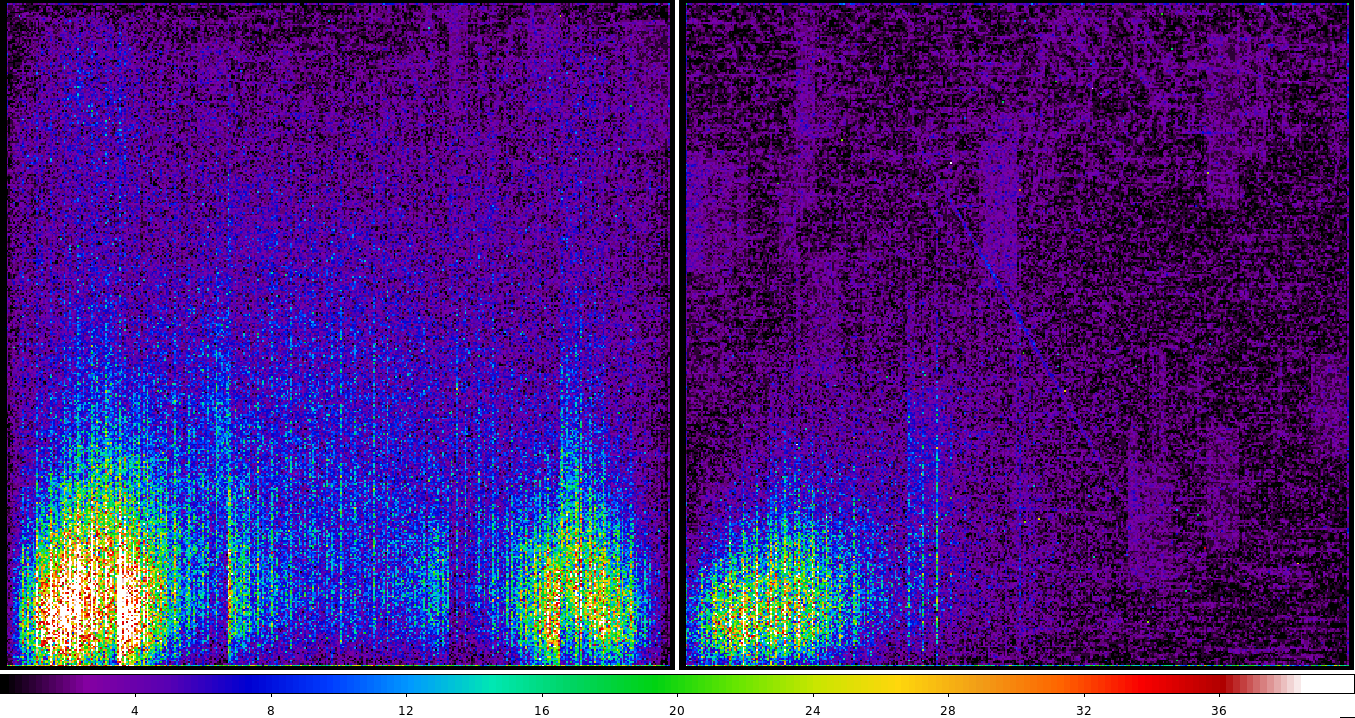eROSITA light leak: telescope modules TM5 and TM7
During the commissioning phase of eROSITA, it was noticed that telescope modules (TM) 5 and 7 were contaminated by optical light: a small fraction of sunlight reaches the CCD, by-passing even the filter wheel. The reason why this contamination affects these two cameras is that they do not have an aluminium on-chip optical light filter as the other 5 cameras. This contamination affects the whole CCD; its peak is at the bottom part of the CCD cameras, as illustrated in the following images:

Detector images of TM5 (left) and TM7 (right), which clearly show the optical light leak contamination at the bottom of the CCDs. Both images are scaled to the same level.
It is known now, that the intensity of this optical contamination depends on the orientation of the telescope with respect to the Sun.
The light leak generates a non-negligible amount of telemetry data, which decreases the low energy coverage and spectroscopic capabilities for these two cameras. In order to reduce the amount of transmitted data from TM5 and TM7, their primary thresholds are higher (about 105-125 eV) than the ones in the other TMs (about 65-85 eV). The fact that the amount of contamination by optical light is spatially and temporally variable makes it very difficult to derive a calibration for these TMs. For the time being, they should not be regarded as having been calibrated.
Users of the eROSITA Early Data Release (EDR) are encouraged to take into account the light leak on TM5 and TM7 when performing their analysis.
For a detailed description of the eROSITA efforts to mitigate the light leak impact on eROSITA data have a look at Section 9.2 of Predehl et al. 2021.